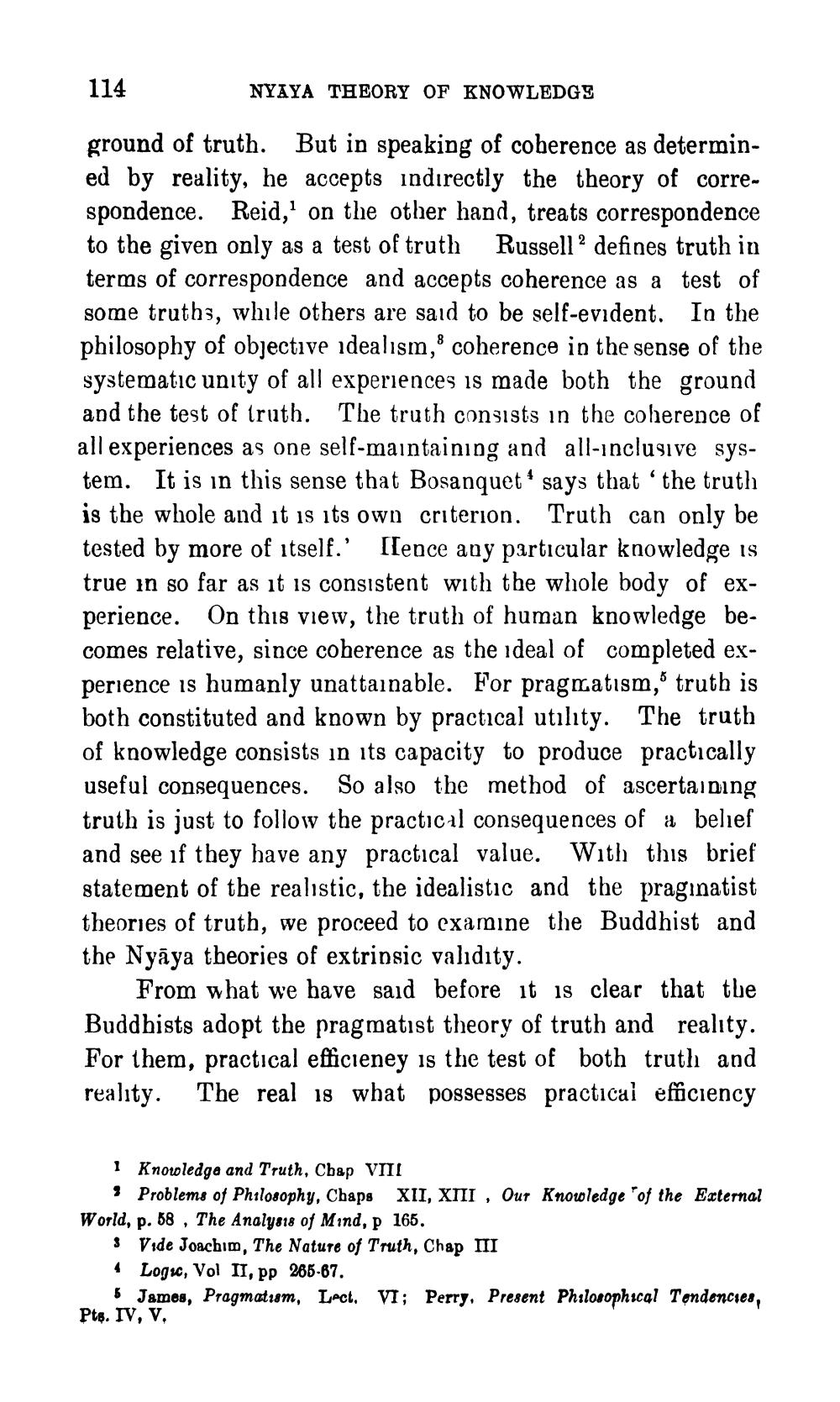________________
114
NYAYA THEORY OF KNOWLEDGE
ground of truth. But in speaking of coherence as determined by reality, he accepts indirectly the theory of correspondence. Reid,' on the other hand, treats correspondence to the given only as a test of truth Russell 2 defines truth in terms of correspondence and accepts coherence as a test of some truths, while others are said to be self-evident. In the philosophy of objective idealism, coherence in the sense of the systematic unity of all experiences is made both the ground and the test of truth. The truth consists in the coherence of all experiences as one self-maintaining and all-inclusive system. It is in this sense that Bosanquet* says that the truth is the whole and it is its own criterion. Truth can only be tested by more of itself.' llence any particular knowledge is true in so far as it is consistent with the whole body of experience. On this view, the truth of human knowledge becomes relative, since coherence as the ideal of completed experience is humanly unattainable. For pragmatism, truth is both constituted and known by practical utility. The truth of knowledge consists in its capacity to produce practically useful consequences. So also the method of ascertaining truth is just to follow the practical consequences of a belief and see if they have any practical value. With this brief statement of the realistic, the idealistic and the pragınatist theories of truth, we proceed to examine the Buddhist and the Nyāya theories of extrinsic validity.
From what we have said before it is clear that the Buddhists adopt the pragmatist theory of truth and reality. For them, practical efficieney is the test of both truth and reality. The real is what possesses practical eficiency
I Knowledge and Truth, Chap VIII
3 Problems of Philosophy, Chaps XII, XIII , Our Knowledge of the External World, p. 58, The Analysis of Mind, p 165.
3 Vide Joachim, The Nature of Truth, Chap III 4 Logs, Vol II, pp 285-87.
5 James, Pragmatism, Lect. VI; Perry, Present Philosophical Tøndencies, Pts. IV, V,




